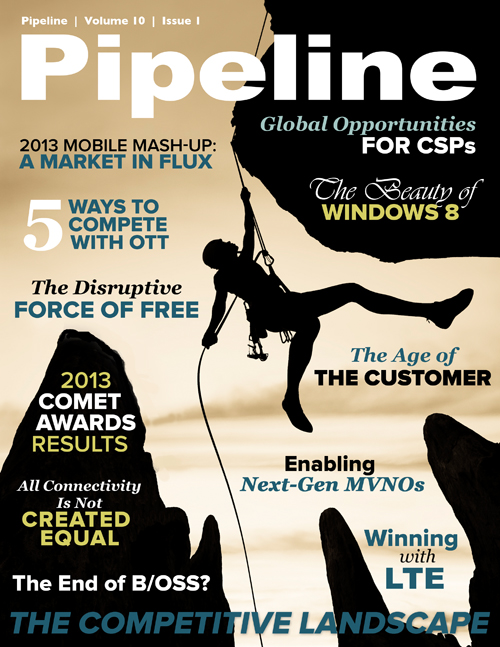The Disruptive Force of Free: Lessons Learned from Low to No-Cost Services
Fon
Share a little Wi-Fi and roam the earth for free—that’s Fon’s story in a nutshell. The company claims to manage the largest Wi-Fi network in the world, with more than eight million hotspots, and by depending on collaborative consumption, it’s able to supply free global roaming to its customer base.
Fon doesn’t own copper or fiber; it’s more like an over-the-top (OTT) player than a service provider. The company’s Fonera Wi-Fi router sits in between a broadband connection and the subscriber, and like the Freebox, it features a dual SSID configuration that partitions connectivity into two networks—one that’s private for the home, one that’s public for roaming customers. Once a subscriber owns a Fonera router, there are no fees associated with the service.
Interestingly, many CSPs have signed on as Fon partners, including BT, KPN, SoftBank, Belgacom, and SFR, and in March the juggernaut Deutsche Telekom signed on as well. The advantages for these network operators are clear: instant access to a global Wi-Fi network, reduced network strain with Wi-Fi offload, and the ability to create sell-through offerings via visitor access and brand subsidy.
Accessing free Wi-Fi around the world through Fon isn’t the most fluid process—not yet anyway. Users must sign in to be connected, which can be tricky in some countries because login screens may not be standardized. Still, the collaborative-use model makes a lot of sense, especially since terrestrial networks are overengineered to support the sliver of users who actually consume more than 250 GB per month.
Republic Wireless
Although it isn’t free, Republic Wireless offers unlimited everything—texting, calling, internet—for just $19 a month. In February on AllThingsD.com Wall Street Journal columnist Walt Mossberg wrote that the North Carolina company is “using an unusual technology approach that’s smart and may even represent the future.” He’s right, and the key is hybrid calling, a feature that’s embedded in the one (yes, just one) phone available from the carrier; it uses Wi-Fi most of the time but hops onto Sprint’s 3G network whenever Wi-Fi is unavailable. The company also saves a boatload of cash by relying solely on online support.
Republic recently added functionality from Devicescape, an innovative vendor that Pipeline met with in Spain at Mobile World Congress in February. Devicescape enables service providers to tap into the massive global pool of public Wi-Fi hotspots in order to offer free Wi-Fi with a managed, seamless login and guaranteed level of service.
Subsidy models
“A lot of operators would like to allow someone else to subsidize access,” said Akil Chomoko, product marketing manager at Volubill, during a recent conversation with Pipeline. Leaders at AT&T, Verizon and T-Mobile have all indicated that subsidized data is coming, and Deutsche Telekom and KPN have already signed such deals with Spotify in Europe. In developed markets the mobile data used by a specific application or service is subsidized by the developer to attain improved quality of service (QoS), while in emerging markets, where mobile data is a precious commodity, CSPs can compel uptake by pursuing innovative subsidy models.
Developer-, brand- and ad-supported models all merit exploration. With the advent of Big Data, the subsidy models can become more innovative than ever. A marketing firm could subsidize access in exchange for data instead of paying a research group to conduct a study on, say, the travel habits of childless females, ages 30-39, in the greater Boston area. And major sports franchises could subsidize access during games to gain granular insight into spending and behavioral habits, which could then be used to shape operational strategy.
Is free the future?
Free is happening now, and all of the technologies that are making it possible are available to CSPs. From collaborative consumption models and carrier-grade Wi-Fi to innovative subsidized access and user devices that function as network elements, perhaps what best represents the future is a new way of envisioning and charging for connectivity. Nothing is totally free at a fundamental level, but how the burden of cost is distributed and settled can be abstracted, just like everything else in telecommunications. Tier 1 service providers can and should employ many of these technologies, because in the meantime companies like Free Mobile and services like Google Fiber are making a significant impact on the competitive landscape.



















